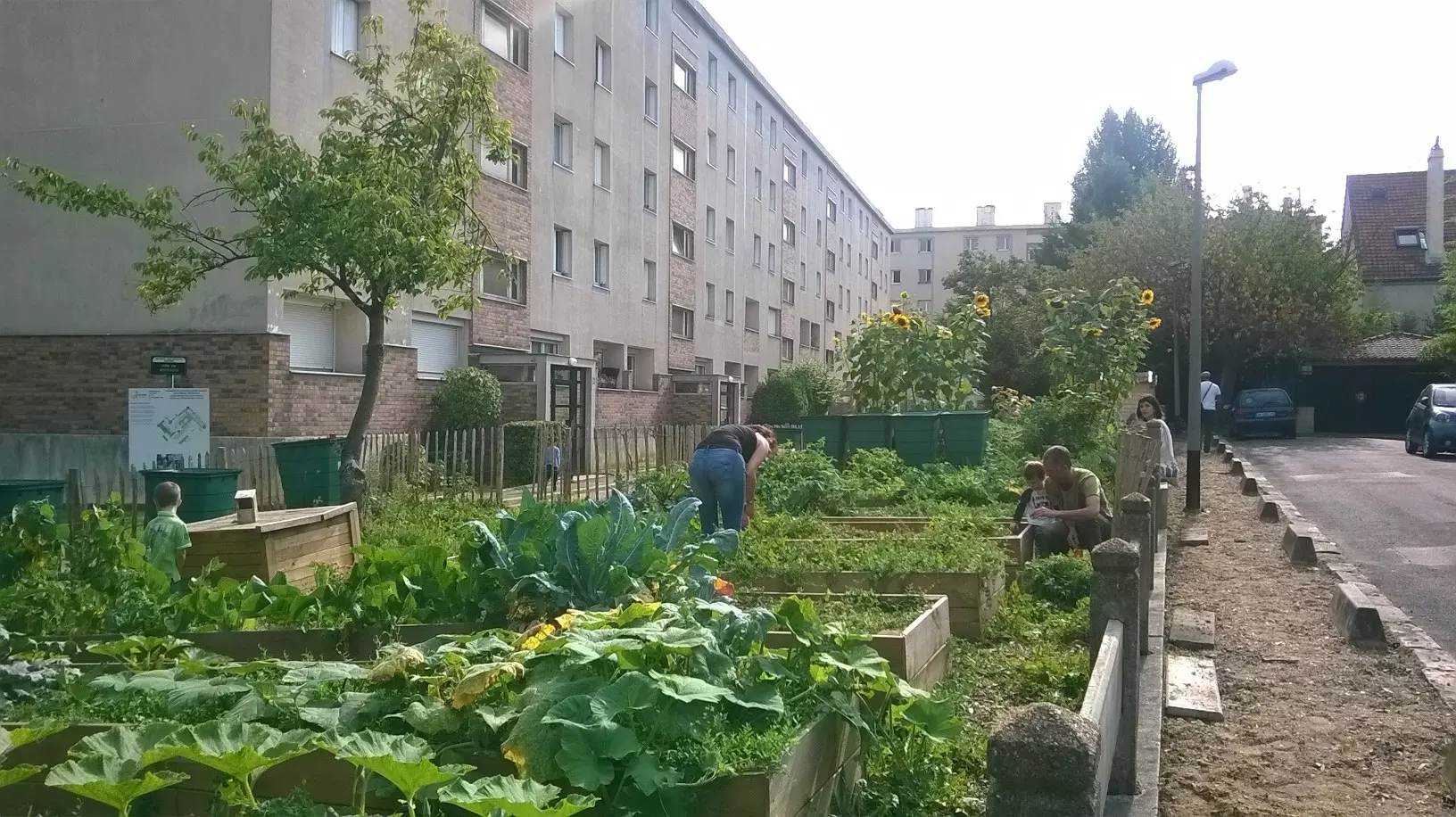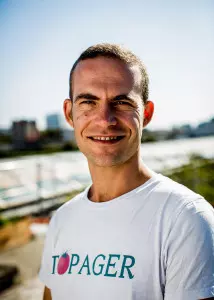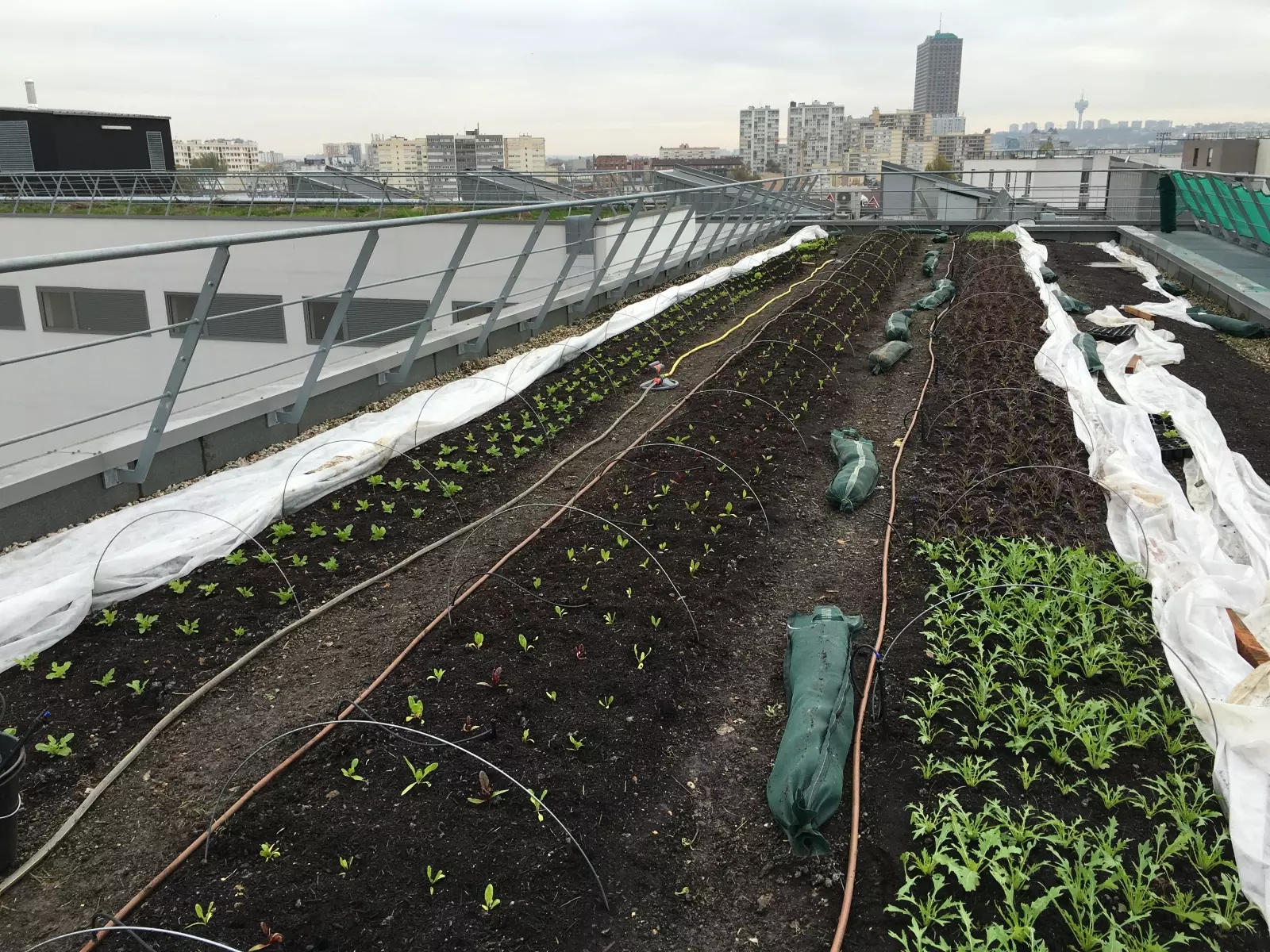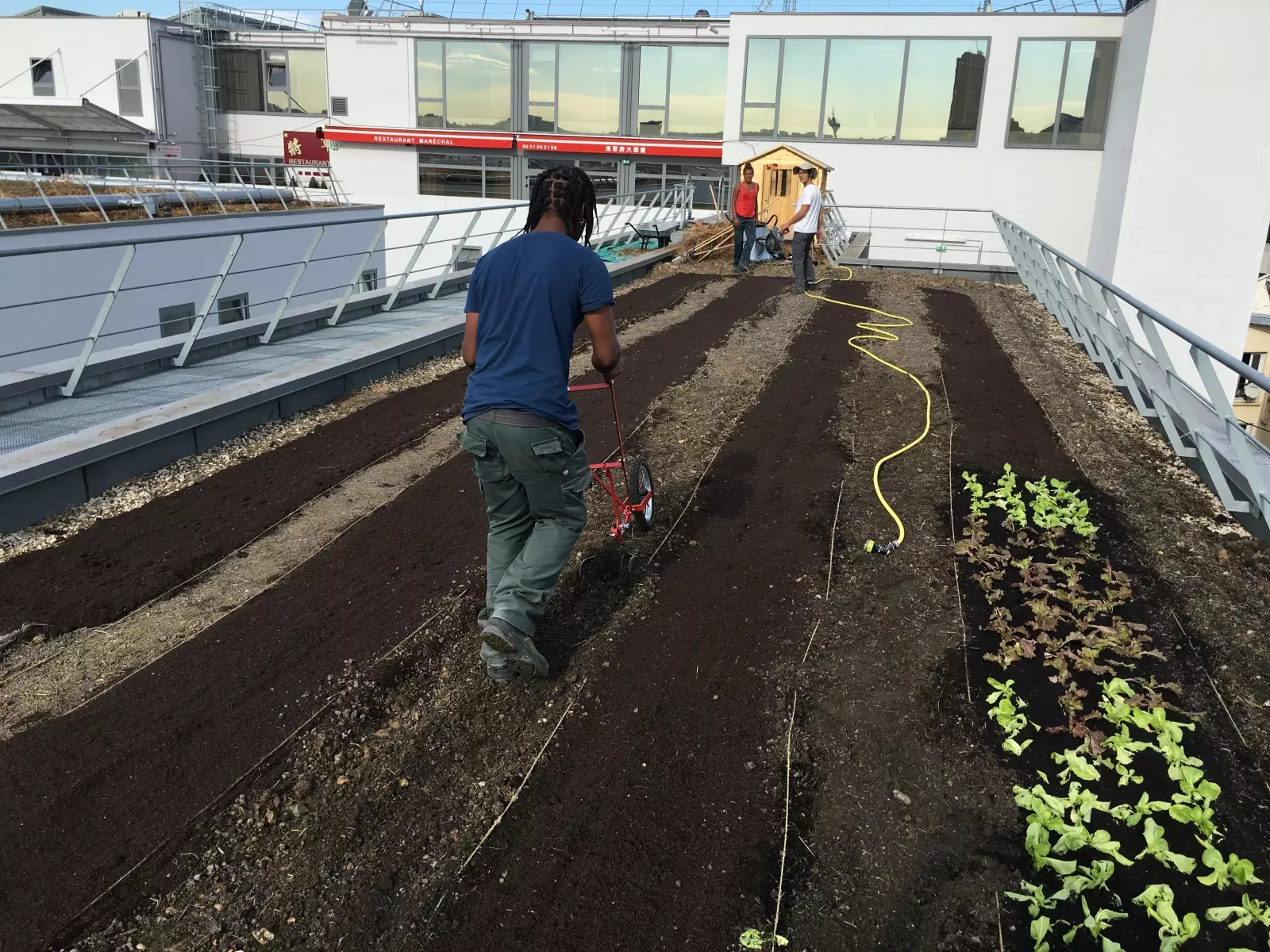
Topager was developed from an agricultural experiment on the rooftops of the AgroParisTech [1] through biomimicry (act of imitating living organisms). Three imperatives guided our approach: cultivate using local waste composted on-site, keep the soil alive by the presence of fungi and earthworms that recreate humus, and maximize ecosystem services, such as retaining rainwater for community use.
As a result of this experiment, some major chefs asked us to grow aromatic herbs and vegetables on the rooftops of their restaurants and this is how Topager began four years ago. Today, the company employs thirteen people. It designs shared gardens, vegetated rooftops, and other urban agriculture projects. It plants them and maintains them.

You are in a very buoyant current, especially in Paris, where the city encourages this type of project, is that right?
We have contributed to the developing enthusiasm on this issue and it carries us: after having visited the crops on the rooftops of AgroParisTech, the candidate, Anne Hidalgo, launched her "Oser Paris" campaign think tank. There is a strong community ambition that carries the movement and manifests itself through the "Reinventing Paris" and "Parisculteurs" programs.
You practice agriculture without chemicals but what is the impact of urban pollution on crops?
Particles from urban pollution are essentially harmful to the lungs but their impact is minor if eaten. Some particles contain toxic elements: hydrocarbons from urban heating systems in winter or heavy metals from car exhaust systems. Hydrocarbons are deposited on the leaves but most of them are eliminated on the first wash. Heavy metals are, by definition, dense and remain on the ground. We do find traces on the roofs but the measured rates remain far below the norms.
The soil of major cities have been heavily polluted by past industrial activities. We carry out a lot of pollution measurements on the sites of our customers. These measurements were of course carried out on CultiCime as a precaution but a site above ground level has no reason to be contaminated. One must be wary of appearances: the air in the city is polluted but many crops in the countryside are contaminated by pesticides.
What is the specificity of Culticime compared to other urban agriculture projects that you have already implemented?
CultiCime's ambition is to develop a replicable and profitable professional urban market gardening activity through social inclusion: the sale of produce should cover the site's management costs. The projects we have implemented up to now have not been so ambitious. Produce produced by CultiCime, such a vegetables and berries (raspberries), require manual labor and therefore create employment. CultiCime is also intended to be an ecosystem service: if we recover tons of waste to transform into compost, pollution generated by garbage trucks and waste incineration will decrease. This is a service to the community, beyond production.

How can farming on a small surface area be profitable?
In conventional market gardening, you only need one hectare to be profitable. We are very aware of the difficulties involved in making a farm of 1,000m2 profitable. We rely on high value-added products and mixed crops: lettuces in growth are surrounded by radishes for a first harvest: every inch is optimized. We are creating standard models of efficiency to balance wages and income from market gardening.
Our approach is based on our experience and research as well as on 150 years of exceptional expertise in intensive market gardening developed in the suburbs of Paris, notably in Aubervilliers. The book Le manuel pratique de la culture maraîchère à Paris, published in 1845, describes very specific methods: the depth at which each seed must be planted, the horse manure compost, manual cultivation techniques, etc. The new Paris-Marseille train line made this expertise obsolete by importing vegetables from the south to Paris. I define this "bio intensive agro-ecological" market gardening as non-mechanized production on a small surface area which optimizes the rotation and combination of crops. We draw inspiration from these techniques.
No machines can be used on rooftops. In our Ivry-sur-Seine research center, we test the profitability of certain plots using new methods. We are in a process of continuous innovation to adapt techniques to the context of each project. For example, we would like to install a composter on CultiCime. Composters for individuals or large industrial plants are available but there is nothing in between or what does exist is not adapted to our needs. Young shoots, such as arugula, need to be watered with a mist, so we had to test different types of sprinklers. We test these techniques to be as economical and efficient as possible.

CultiCime began to produce small quantities of lettuces in late 2016. Local restaurants buy their produce at wholesale prices and we cannot compete with this. Direct sales are more in our niche. We reduce costs by avoiding transport and storage. We plan to put this in place for Veolia employees who will be able to place their orders online. The ideal format would be an AMAP[2] within Veolia. In spring, we will be growing a wide variety of vegetables, such as tomatoes, courgettes, beans, and peas as well as berries to offer a complete food package.
What do you think is the future of urban market gardening?
People working for the Espaces Association under a social inclusion program usually maintain green areas. At CultiCime, they learn how to sow, plant, and protect plants against disease and pests. They are really interested in these activities. There is a sense of pride in producing food, especially as feedback on the quality of our produce is very positive. I am impressed by their state of mind and their skills. It is very rewarding for the those who train them.
We are currently selecting the best methods to fulfil our objective: to create a training course in urban market gardening in 2017. This will help develop a variety of jobs: managing shared gardens or working on peri-urban market gardening sites or in organic shops.
Topager is running research programs with the French Natural History Museum (MNHN), the INRA (French National Institute for Agricultural Research), and the CNRS (French National Scientific Research Council) on the future development of urban agriculture and how this is developing in other countries.
For example, we are working on decontaminating and reclaiming embankment land as part of the construction of the Grand Paris Express. Urban agriculture is vast and multifaceted. There are a lot of shared gardens which are cultivated and managed by residents, especially in peri-urban areas. Production on rooftops is innovative and remains exceptional. Initial experiments were conducted in the United States and Canada, such as the Brooklyn Grange which produces over two tons of organic food every year on two rooftops in New York. Professional urban agriculture on rooftops will probably never produce large volumes. Family gardens are also appearing on rooftops. They feed the family with high-quality products at low cost. Peri-urban agriculture will develop. It preserves agricultural areas in the suburbs and remains essential to feed cities.
After having been belittled for a long time, agriculture is regaining recognition. For example, every week, Topager receives several job applications from very qualified people from very different sectors who want to change their career and work in urban agriculture. It would seem that driving a combine harvester is not attractive, however, the complexity of market gardening, the excellence of its products, and the personalized relationship with customers are perceived as very enriching.
[2] An AMAP (association for the preservation of local farming) is the result of a group of consumers and a producer coming together and entering into a contract together. It defines, in particular, the diversity and quantity of foodstuffs to be produced for the season, agronomic methods (based on the Local Farming Charter and organic farming specification), food package price, and the place and time of regular distribution.

